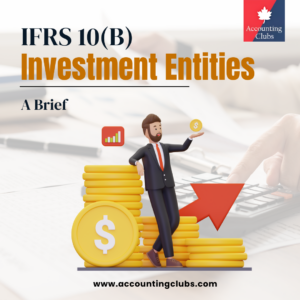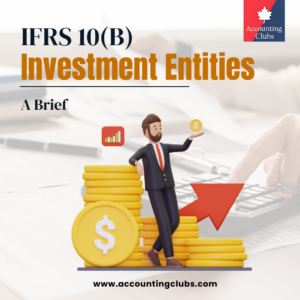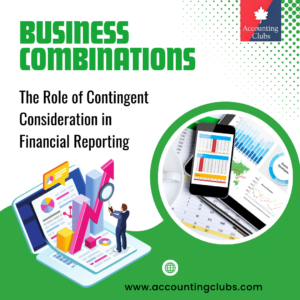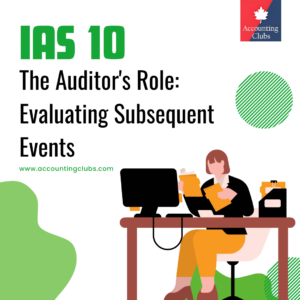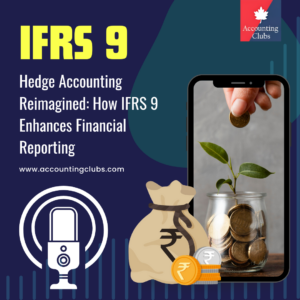Chapter 4: The year-to-date principle
Annually determined amounts
The standard gives guidance in respect of certain annually determined items of income and expenditure, such as taxation, where it is more difficult to apply the ‘year-to-date’ approach (for example, in situations where taxes are only due on amounts above, or below, certain annual thresholds). The standard draws a distinction between amounts that vary over the course of a year and amounts that can only be determined on an annual basis. Taxes are probably the most prevalent example. Other examples are considered in the following FAQs, based on the illustrative examples in IAS 34.
How should major planned periodic maintenance or overhaul be accounted for?
The cost to the entity of periodic maintenance, or of a major overhaul that is planned and expected to be undertaken after the end of the interim period, is not anticipated by the entity when preparing its interim financial report, unless the costs meet the definition of a liability in IAS 37. The mere intention or necessity to incur expenditure related to the future is not sufficient to give rise to an obligation. The test for the interim report is the same as for the annual financial statements: if no liability would be accrued for future maintenance at the year-end, no liability should be accrued in the interim period.
Taxation is assessed based on annual results and, accordingly, determining the tax charge for an interim period will involve making an estimate of the likely effective tax rate for the year.
The tax charge or benefit cannot be properly determined until the end of the financial year (or, if different, the tax year), when all allowances and taxable items are known. Calculating tax on the basis of the results of the interim period in isolation could result in recognising a tax figure that is inconsistent with the manner in which tax is borne by the entity. Therefore, the calculation of the effective tax rate should be based on an estimate of the tax charge or benefit for the year expressed as a percentage of the expected accounting profit or loss. This percentage is then applied to the interim result, and the tax is recognised rateably over the year as a whole.
Foreign currency
The same principles for the translation of transactions and balances denominated in foreign currencies, and the translation of the financial statements of foreign currency operations, are applied to the preparation of the interim financial report as would be applied for the preparation of the annual financial statements. The principles are set out in IAS 21 and are discussed further in chapter 49, including the rules for using the transaction, average or closing rate and for taking the resultant gain or loss to income or to equity. Where an entity is translating the results of a foreign operation using the average rate, the average rate for the interim period being reported should be used. Changes in the exchange rate between the date of the interim financial report and the year-end should not be anticipated. All translation gains and losses that are required, by IAS 21, to be reported in the entity’s income statement should be recognised in the period in which they arise. Such gains and losses should not be deferred on an entity’s balance sheet at the end of the interim period.
Tax charge in respect of prior year
Where tax has been under-provided or over-provided in prior years, a tax charge or benefit could be recognised in the current year to adjust the previous estimate. Where management concluded that the adjustment is a change in estimate, the question arises as to whether this tax charge or benefit can be spread over the full year (as part of the calculation of the effective rate for the year), or whether it has to be recognised in full in the interim period. IAS 34 does not specifically cover the issue of adjustments to tax in respect of prior years.
In relation to the interim tax charge, it states in paragraph B12 that interim period income tax expense is accrued using the tax rate that would be applicable to expected total annual earnings – that is, the estimated average annual effective income tax rate applied to the pre-tax income of the interim period. In this case, the adjustment in respect of prior years has nothing to do with expected total annual earnings for the period or the pre-tax income of the interim period, and so it should not enter into the calculation of the estimated average annual tax rate. Instead, since it relates to the previous period, it should be treated as a charge in full in the interim period in which it becomes probable that such adjustment is needed.
Change in estimated or actual effective tax rate
If an entity is publishing interim financial reports for each quarter, it is reasonable to expect that, however robust its forecasts and budgets are, there will be unforeseen events that cause the initial estimate of the entity’s effective tax rate to require revision. At the date of each interim financial report, the entity should re-estimate its effective annual tax rate and apply that to the profits earned to date. There should be no restatement of previously reported interim periods for this change in estimate, but IAS 34 would require disclosure in the notes to the interim financial report of the nature and impact of a significant change in an estimate. Where a change in income tax rate is enacted, or substantially enacted, during an interim period, the ‘effective’ average annual tax rate might change.
As noted, the ‘effective’ average annual tax rate is calculated by estimating the ‘total’ tax charge for the year (comprising both current and deferred tax) and expressing this as a percentage of expected accounting profit or loss for the year. This ‘effective’ average annual tax rate is then used to compute the ‘total’ interim tax charge. Judgement should be applied in determining the most appropriate way to split the ‘total’ interim tax charge between current and deferred tax in the interim financial statements. The method used for allocating the ‘total’ interim tax charge between current and deferred tax should be applied consistently. In determining the ‘effective’ average annual tax rate, it is necessary to estimate closing deferred tax balances at the end of the year; this is because deferred tax is a component of the estimated ‘total’ tax charge for the year.
Although IAS 12 requires deferred tax to be measured at tax rates that are expected to apply on reversal of the temporary difference using enacted or substantially enacted tax rates, IAS 34 is not clear as to when in the annual period the impact of remeasuring closing deferred tax balances for a change in rate is recognised. In practice, there are generally two approaches to estimating the ‘effective’ average annual tax rate to apply to interim periods; under both approaches, the ‘effective’ average annual tax rate is applied to interim pre-tax profit to derive the ‘total’ tax charge for the interim period (see above):
1. The estimated rate does not include the impact of remeasuring closing deferred tax balances at the end of the year. Under this approach, the impact of remeasuring these balances is recognised immediately in the interim period in which the change in rate is enacted or substantially enacted. It is not included in the estimated ‘effective’ average annual tax rate.
2. The estimated rate includes the impact of remeasuring closing deferred tax balances at the end of the year. Under this approach, the impact of remeasuring deferred tax balances is recognised as the re-estimated ‘effective’ annual tax rate is applied to interim pre-tax profits. The approach to estimating the ‘effective’ annual tax rate to apply to the interim results should be applied consistently as an accounting policy and disclosed where the impact is material.
Tax year differs from accounting year
In many jurisdictions, an entity’s tax is calculated based on its results for the accounting year. Unless an entity’s accounting year is the same as the tax year, more than one tax rate might apply during the accounting year. The entity should apply separate effective tax rates to the portion of pre-tax result in each of those income tax years. An entity’s accounting year end is 31 December, but its tax year end is 31 March. As a result, where different tax rates apply for different tax years, the quarterly profit will be taxed at different rates. The entity publishes an interim financial report for each quarter of the year ended 31 December 20X8. The entity’s profit before tax is steady at C10,000 each quarter, and the estimated effective tax rate that the entity faces is 25% for the year ended 31 March 20X8 and 30% for the year ended 31 March 20X9.
Quarter ended 31 March 20X8
Quarter ended 30 June 20X8
Quarter ended 30 September 20X8
Quarter ended 31 December 20X8
Year ended 31 December 20X8 C C C C C Profit before tax 10,000 10,000 10,000 10,000 40,000 Tax charge (2,500) (3,000) (3,000) (3,000) (11,500) 7,500 7,000 7,000 7,000 28,500 Note that the effect of the change in the tax rate on deferred tax balances is a separate issue. If the entity in the above example had published an interim financial report for the first half of the year only, rather than for each quarter, the tax expense for the six months to 30 June 20X8 would have been C5,500 and, for the six months to 31 December 20X8, it would have been C6,000.
Intra-period losses
The general approach of estimating the effective tax rate for the year should be used even where, for example, an entity’s result in the current interim period of the year is expected to be wholly offset by its result in the future interim periods of the year. The consequence of this approach is that, conceptually, even if the overall result for the year was expected to be a break-even position, an effective tax rate exists that needs to be applied to the interim period. This is outlined in the example below, which has been simplified to assume that the expected profit before tax is equal to the expected taxable profit.
Example – Effective tax rate where there are losses in some periods
Jan– June Jul–Dec Full year C’000 C’000 C’000 (Loss)/profit before tax (10,000) 10,100 100 Tax credit/(charge) 3,300 (3,333) (33) (Loss)/profit after tax (6,700) 6,767 67 The tax charge for the year is expected to be C33,000 and the profit for the year is expected to be C100,000, which results in an expected effective tax rate of 33% to be applied to the period ended in June. The example indicates that the first interim period will have a tax credit of C3,300,000 when the entity is actually expected to suffer a tax charge of C33,000 for the full year. Expected effective tax rates should be applied to interim losses as well as to profits. However, it might be appropriate to adopt a more cautious approach to recognising the deferred tax asset that arises from interim losses where there is no history of equal or larger profits in the second half of the year. That is, if a deferred tax asset arises with respect to a loss in the interim period and this ‘relief’ is merely the result of applying the expected effective tax rate (as outlined in the example above), this asset should only be recognised if it is probable that the loss will reverse in the foreseeable future.
A history of losses in the first half of the year, and then equal or larger profits in the second half, would support recognising such an asset. On the other hand, if the loss in the first half was unexpected and is not related to an unusual non-recurring transaction or event, this might indicate uncertainty regarding the likely results in the second half of the year. Under such circumstances, the deferred tax asset’s recoverability is more uncertain, and it might not be appropriate to recognise the asset. Furthermore, if losses are expected for the full year, a deferred tax asset can only be carried forward at the interim date to the extent that it is probable that future taxable profit will be available against which the unused tax losses can be utilised. Therefore, unless there is other convincing evidence that the deferred tax asset is recoverable (because, for example, the losses can be carried back or forward, it should not be recognised in the interim period any more than it should be recognised in the annual financial statements.
Treatment of one-off disallowable expenses
In the example, the tax benefit of C3,300,000 appears high in relation to the expected tax charge of C33,000 for the year as a whole. Nevertheless, it allows users an insight into the expected tax rate for the full year and enables them to compare this with the actual tax rate for the previous year. The effects of, for example, losses in the first half of the year and profits in the second half on the tax position should be discussed in the report’s explanatory section, if material. However, if there are expense items that are disallowed for tax purposes, these will increase the effective tax rate. In some cases, the disallowable items might have a distortive effect on the effective tax rate and on the resulting deferred tax asset recognised. In such a case, our view is that the disallowable items are not included in determining the effective tax rate, but are instead dealt with in the interim periods in which they arise. This is consistent with the approach in paragraph B19 of IAS 34 for tax benefits that relate to a onetime event, which refers back to paragraph B14 for categories of income with different tax rates. The accounting treatment in a situation where the disallowable items have a distortive effect on the effective tax rate is illustrated below.
Example – Effective tax rate when there are losses and disallowable items
An entity makes a loss in the first half of the year of C500,000, and it expects to make a profit in the second half of C550,000 (overall profit: C50,000 for the year). The interim results include expenditure of C140,000 in the first half, that is disallowed for tax purposes. The expected profit in the second half of the year includes expected disallowable expenditure of C160,000. The applicable tax rate in the entity’s jurisdiction is 30%. The taxable profits for the year and the related tax are as follows:
Jan– June Jul–Dec Full year C’000 C’000 C’000 (Loss)/profit before tax (500) 550 50 Disallowable expenditure 140 160 300 Taxable (loss)/profit (360) 710 350 Tax charge @ 30% (105) If an effective tax rate including the effect of the disallowable expenditure is calculated, this is 105,000/50,000 or 210%. Applying this to the results in the interim periods gives the following:
Jan– June Jul–Dec Full year C’000 C’000 C’000 (Loss)/profit before tax (500) 550 50 Tax credit/(charge) @ 210% 1,050 (1,155) (105) Profit/(loss) after tax 550 (605) (55) Effective tax rate 210% 210% 210% Subject to recoverability, a deferred tax asset of C1,050,000 would be recognised on the interim balance sheet. When the tax rate of 210% is then applied to the profits made in the second half of the year, a tax charge of C1,155,000 would be generated, giving a net tax charge of C105,000 for the full year. However, it can be argued that applying a tax rate of 210% has a distortive effect and overstates the tax asset. If the effective tax rate is calculated excluding the effect of the disallowable items, this is 105,000/350,000 or 30%. Applying this to the results in the interim periods, and dealing with the disallowable items separately in the interim periods in which they arise, gives the following:
Jan– June Jul–Dec Full year C’000 C’000 C’000 Taxable (loss)/profit (360) 710 350 Tax @ 30%1 108 (213) (105) Disallowable expenditure1 (140) (160) (300) Tax @ 0%1 – – – Totals for the period: (Loss)/profit before tax (500) 550 50 Tax credit/(charge) 108 (213) (105) (Loss)/profit after tax (392) 337 (55) 1As noted above, the disallowable items are not included in determining the effective tax rate, but they are instead dealt with in the interim periods in which they arise, consistent with the approach in paragraph B14 of IAS 34 for categories of income with different tax rates. Disallowable expenditure is effectively taxed at a zero rate. Under this approach, subject to recoverability, a deferred tax asset of C108,000 is recognised on the interim balance sheet. When the tax rate of 30% is applied to the profits made in the second half of the year, a tax charge of C213,000 is generated, giving a net tax charge of C105,000 for the full year.
As explained above, we believe that this approach is appropriate where, as in this example, the disallowable items have a distortive effect on the effective tax rate and on the resulting tax credit and deferred tax asset recognised. This might be the case where a loss in one interim period becomes income (or vice versa) in the next, or where there is a concentration of a significant amount of disallowable expenses in one interim period and not in the other.
Inter-period loss carry-back or carry forward
Where an entity makes a loss for a period that the entity has the right to carry back to prior periods against tax charges in those periods, it recognises a current tax asset and a corresponding reduction in the current interim period tax expense. Tax losses that can be carried forward meet the definition of a deferred tax asset in IAS 12. In determining the amount of tax losses to recognise in the interim period, the entity should consider whether the resultant tax asset meets the criteria for recognition contained in IAS 12. The criteria specify that “a deferred tax asset shall be recognised for the carry-forward of unused tax losses and unused tax credits to the extent that it is probable that future taxable profit will be available against which the unused tax losses and unused tax credits can be utilised”. Where loss carry-forwards exist at the beginning of a reporting period, an estimate should be made of the impact of the expected utilisation of such loss carry forwards over the whole tax year. The amount recognised in the interim period should be proportional to the profit before tax of the interim period and the estimated annual profit before tax, but limited to the amount recoverable for the year as a whole.
Brought-forward losses recoverable in the year
An entity has tax losses brought forward of C75,000, first half-year taxable profits of C100,000 and an expected second half-year loss of C40,000. The maximum annual utilisation of tax losses brought forward is C60,000, based on the expected taxable profits for the year. Tax losses of C60,000 should be absorbed in the first half-year, leaving C40,000 first half-year taxable profits to be set against second half-year losses of C40,000. This would result in a current tax charge (at 30%) of C12,000 in the first half- year and a current tax credit of C12,000 in the second half-year, resulting in an overall nil current tax charge for the year. The above example does not deal with the recognition of a deferred tax asset for the losses in excess of the current-year profits.
Recognition and derecognition of deferred tax assets
There are a number of factors that might generate movement on deferred tax balances other than the origination and reversal of temporary differences – for example, changes in tax law and the re-assessment of recoverability. The nature of such movements will impact the timing of their recognition. Changes that result from the re-assessment of recoverability of a deferred tax asset are generally accounted for in the interim period in which they occur; although, in some circumstances, it might be acceptable to spread the impact of such re-measurements over the year by adjusting the effective tax rate. Where a previously recognised deferred tax asset no longer meets the recoverability criteria at an interim balance sheet date, our view is that the asset should be derecognised in that period. This is based on a principle that, when an asset is no longer recoverable, it should not be recognised on the balance sheet.
In practice, an alternative approach is sometimes applied, whereby derecognition of the deferred tax asset is spread through the estimated effective annual tax rate, on the basis that this approach is consistent with the general model for spreading the annual tax expense (benefit) in relation to the results for the annual period.
Whilst we believe that immediate derecognition of the deferred tax asset more faithfully represents an entity’s financial position in such circumstances, this is not prescribed by IAS 34; and so, this alternative approach is acceptable as an accounting policy choice, provided that it is supported with clear disclosure. Where a change results in a previously unrecognised deferred tax asset being considered recoverable at an interim balance sheet date, there is some diversity in practice regarding how such a change is recognised. Possible options include the following: spread the effect of the change in the deferred tax assets over the full year, based on application of an annual effective tax rate; spread, through the effective tax rate, the effect of the change in the deferred tax assets relating to temporary differences expected to reverse in the current year; and recognise, in the interim period of the change in estimate, the remaining portion that relates to reversals in future years (on the basis that these do not relate to income for the current year); or recognise the full effect of the change in the deferred tax assets in the interim period if the change in estimate is attributable to a one-off event that has occurred in that period. The approach taken will be a matter of accounting policy, and that approach should be applied consistently to all re-measurements year on year (notwithstanding that the third approach outlined above would only be applied if the remeasurement in question is triggered by a one-off event). The three potential treatments are illustrated in the example below.
Example – Brought-forward losses qualify for asset recognition
Entity A is assessed for tax purposes based on calendar years, and it has a year-end of 31 December. It has unused tax losses carried forward at 31 December 20X8 of C3,000,000. Entity A’s management did not recognise a deferred tax asset in respect of unused tax losses in the 20X8 annual financial statements, because of uncertainties regarding the utilisation of those losses. Forecasts showed no expected taxable profits in the foreseeable future. By 30 June 20X9, trading has improved and entity A made taxable profits of C250,000 in the first half-year, against which unused tax losses can be recovered. Management has revised its profit forecasts and predicts that the remaining tax losses will be utilised against expected taxable profits of C750,000 in the second half-year, with the balance utilised against taxable profits in the following year. Management, therefore, has a valid basis for recognising a deferred tax asset at the interim balance sheet date. The applicable tax rate is 30%.
Approach A – Spread full effect
Under this approach, the unused tax losses of C3,000,000 are spread in proportion to the taxable profits in the first and second half-years, as follows:
Jan– June Jul–Dec Full year C’000 C’000 C’000 Taxable profits 250 750 1,000 Unused losses to be recovered in period 250 750 1,000 Unused losses to be recovered in future 500 1,500 2,000 Total losses to be recovered 750 2,250 3,000 The effective tax rate is as follows:
Jan– June Jul–Dec Full year C’000 C’000 C’000 Taxable profits 250 750 1,000 Losses utilised (250) (750) (1,000) Current tax – – – Losses to be recovered in future (500) (1,500) (2,000) Deferred tax credit @ 30% 150 450 600 Net tax credit in income statement 150 450 600 Effective tax rate 60% 60% 60% At the interim balance sheet date, a deferred tax asset of C150,000 is recognised, with the corresponding deferred tax credit recognised in the income statement for the interim period. The remaining deferred tax credit of C450,000 will be recognised in the second half of the year.
Approach B – Partial spreading
Under this approach, the number of losses expected to be utilised in the year are spread over the first and second half-years, with immediate recognition of the balance.
Jan– June Jul–Dec Full year C’000 C’000 C’000 Taxable profits 250 750 1,000 Unused losses to be recovered in period 250 750 1,000 Unused losses to be recovered in future 2,000 – 2,000 Total losses to be recovered 2,250 750 3,000 The effective tax rate is as follows:
Jan– June Jul–Dec Full year C’000 C’000 C’000 Taxable profits 250 750 1,000 Losses utilised (250) (750) (1,000) Current tax – – – Losses to be recovered in future (2,000) – (2,000) Deferred tax credit @ 30% 600 – 600 Net tax credit in income statement 600 – 600 Effective tax rate 240% – 60% At the interim balance sheet date, a deferred tax asset of C600,000 is recognised, with the corresponding deferred tax credit recognised in the income statement for the interim period.
Approach C – Recognition in full in interim period
Under this approach, the tax asset relating to the unused tax losses of C3,000,000 is recognised in full in the interim period.
Jan– June Jul–Dec Full year C’000 C’000 C’000 Taxable profits 250 750 1,000 Unused losses to be recovered in period 250 750 1,000 Unused losses to be recovered in future 2,750 (750) 2,000 Total losses to be recovered 3,000 – 3,000 The effective tax rate is as follows:
Jan– June Jul–Dec Full year C’000 C’000 C’000 Taxable profits 250 750 1,000 Losses utilised (250) (750) (1,000) Current tax – – – Losses to be recovered in future (2,750) 750 (2,000) Deferred tax credit/(charge) @ 30% 825 (225) 600 Net tax credit/(charge) in income statement 825 (225) 600 Effective tax rate 330% 30% 60% At the interim balance sheet date, a deferred tax asset of C825,000 is recognised, with the corresponding deferred tax credit recognised in the income statement for the interim period. C225,000 of this asset reverses in the second half-year, as losses are utilised against profits in that period. The full recognition approach might be appropriate where the improvement in trading results from a specific event (for instance, the inception of a new contract with a major customer), which will result in a significant increase in plant utilisation. The event that has resulted in the recognition of the deferred tax asset is the signing of the contract in the first half of the year.
Can the deferred tax asset change without a change in the rate or any income/expense?
Yes, an example is the tax deduction that can be allowed for share-based payments. In some jurisdictions, deferred tax assets can be recognised in relation to equity-settled share-based payments. This could occur, for example, if the tax deduction that the entity will receive is based on the intrinsic value of the share option at the date on which it is exercised. In such a situation, because the deferred tax asset is measured with reference to the share options’ intrinsic value at each balance sheet date, a movement in the share options’ intrinsic value in the period will lead to a measurement change for the related deferred tax asset.
How should a business combination that occurs in the second half of the year, but before the half-year interim accounts are signed, be reflected in the deferred tax accounting?
The acquisition of a subsidiary might impact the expected effective tax rate. For example, if a newly acquired subsidiary has significant tax losses, this might reduce the rate of tax payable by the enlarged group after the combination. When a business combination occurs in the second half of the year, the question arises at the half-year interim balance sheet date as to whether the acquiring group should assume an expected rate for the full year after taking into account the impact of the combination. Losses attributable to an entity acquired in the second half of the year would not be taken into account in determining the effective average annual tax rate at the interim stage. This is because, under IFRS 3, the group should not account for the acquired subsidiary until control passes. To take account of the effect of the losses in the calculation of the tax rate for the interim financial report would effectively be accounting for the effects of the acquisition before it became unconditional. The reporting entity does not control the losses at the interim date. Furthermore, it might well be that the acquired entity’s tax losses should be recognised as a deferred tax asset in the purchase price allocation, in which case they would not affect the effective tax rate shown in the group’s full-year figures.
Consistent with the requirements of IAS 12, the estimation of the tax charge or benefit should use the tax rates and laws applicable to the full year that have been enacted or substantively enacted by the end of the interim reporting period.
Change in tax rates in interim period
An entity estimates the average annual effective income tax rate using the tax rates and laws that have been enacted or substantively enacted by the end of the interim period. Where a government announces a change in tax laws (rates) during the interim period, but they will only be substantively enacted in the subsequent period, the entity should not consider this proposed change when estimating the average annual effective income tax rate during the interim period. This is so, even where the entity expects that the change will be substantively enacted in the subsequent period. If the impact of the announced change in tax laws (rates) is material to the entity, management should consider disclosing it in the notes to the interim financial statements.
The standard requires that, to the extent practicable and where more meaningful, a separate estimated average annual effective income tax rate should be determined for each material tax jurisdiction and applied individually to the interim period pre-tax income of the relevant jurisdiction. Similarly, where different income tax rates apply to different categories of income, a separate rate should, where practicable, be applied to each category of pre-tax income.
However, the standard recognises that, although this level of precision is preferable, it is not always achievable. Where this is the case, a weighted average of rates across a number of jurisdictions or categories might be applied to the aggregate result of those jurisdictions or categories. This alternative method of calculating the tax charge or benefit for the period should be adopted only where it gives a reasonable approximation of the effect of the more specific calculation.
The tax effect of ‘one-off’ items should not be included in the likely effective annual rate, but it should be recognised in the same period as the relevant ‘one-off’ item. The estimated annual effective tax rate (excluding ‘one-off’ items) will, in that case, be applied to the interim profit or loss excluding the ‘one-off’ items.
Impact of expected expenditure on the tax rate
The likely level of tax benefits on expenditure (for example, in some jurisdictions, capital expenditure) might be readily apparent if such expenditure is planned and approved at the time when the interim report is prepared. If not, an estimate should be made of the amount of such expenditure in the coming interim periods and the likely effect on the effective tax rate for the full year, if the tax benefits are expected to have a material effect on the effective tax rate. However, consideration should be given whether the transaction should be recognised in the period that it happens where the impact on the effective rate would be distortive.
Events and expenditure that are expected to arise in future interim periods in the year, and to impact the effective annual tax rate, should be considered when estimating the annual effective tax rate. An event such as planned expenditure that will result in tax benefits should be anticipated in calculating the effective tax rate for the year. However, it would not normally be appropriate to take account of the tax effects of less routine one-off events that are expected to occur in other interim periods, but to which the entity is not committed (such as contributions to charity that might attract tax benefits).
IFRIC 10 – Impairment
IFRIC 10 clarifies that, when considering impairments, the more specific guidance in IAS 36 overrides the ‘year-to-date’ principle of IAS 34. IFRIC 10 considers the situation of whether an entity should reverse impairment losses recognised in an interim period on goodwill if a loss would not have been recognised (or a smaller loss would have been recognised) if an impairment assessment had been made only at a subsequent balance sheet date. The IFRS IC concluded that an entity should not reverse an impairment loss recognised in a previous interim period in respect of goodwill. This means that the annual results can be impacted by the frequency of interim reporting.
IFRIC 10 Interim Financial Reporting and Impairment
IFRIC 10 has been amended as a result of IFRS 9. For entities that have adopted IFRS 9, the apparent conflict discussed in this section between the requirements of IAS 34 and the requirements of IAS 39 is no longer an issue, and the scope of IFRIC 10 has been reduced to deal only with the prohibition on reversals of impairments for goodwill.
As discussed, IAS 34 requires an entity to apply the same accounting policies in its interim financial statements as are applied in its annual financial statements. IAS 34 also states that the frequency of an entity’s reporting (annual, half-yearly or quarterly) should not affect the measurement of its annual results. To achieve that objective, measurements for interim reporting purposes should be made on a year-to-date basis.
IFRIC 10 addresses the interaction between the requirements in IAS 34 and those dealing with the recognition of impairment losses relating to goodwill under IAS 36, and relating to certain financial assets under IAS 39, and the effect of that interaction on subsequent interim and annual financial statements:
- IAS 36 states that “an impairment loss recognised for goodwill shall not be reversed in a subsequent period”;
- for entities that have not yet adopted IFRS 9, IAS 39 states that “impairment losses recognised in profit or loss for an investment in an equity instrument classified as available for sale shall not be reversed through profit or loss”; and
- for entities that have not yet adopted IFRS 9, IAS 39 requires that impairment losses for financial assets carried at cost (such as an impairment loss on an unquoted equity instrument that is not carried at fair value because its fair value cannot be reliably measured) should not be reversed.
The issue addressed by IFRIC 10 is whether an entity should reverse impairment losses recognised in an interim period relating to goodwill, or relating to investments in equity instruments or in financial assets carried at cost, if a loss would not have been recognised, or a smaller loss would have been recognised, had an impairment assessment been made only at the end of the subsequent reporting period.
The issue is best illustrated by considering the example of Entity A and Entity B, which each hold the same equity investment with the same acquisition cost. Entity A prepares quarterly interim financial statements while Entity B prepares half-yearly financial statements. Both entities have the same financial year-end date. If there was a significant decline in the fair value of the equity instrument below its cost in the first quarter, Entity A would recognise an impairment loss in its first quarter’s interim financial statements. However, if the fair value of the equity instrument subsequently recovered, so that by the half-year date there had not been a significant decline in fair value below cost, Entity B would not recognise an impairment loss in its half-yearly financial statements if it tested for impairment only at the end of the half-year reporting period. Therefore, unless Entity A reversed the impairment loss that had been recognised in an earlier interim period, the frequency of reporting would affect the measurement of its annual results when compared with Entity B’s approach.
The consensus in the Interpretation is that an entity should not reverse an impairment loss recognised in a previous interim period in respect of goodwill or, for an entity that has not yet adopted IFRS 9, an investment in an equity instrument or a financial asset carried at cost. Essentially, IFRIC 10 concludes that the prohibitions on reversals of recognised impairment losses relating to goodwill under IAS 36, and relating to investments in equity instruments and financial assets carried at cost under IAS 39, should take precedence over the more general statement in IAS 34 regarding the frequency of an entity’s reporting not affecting the measurement of its annual results.
IFRIC 10 emphasises that an entity should not extend the consensus of this Interpretation by analogy to other areas of potential conflict between IAS 34 and other Standards.
Implications of impairment of goodwill
Entity A, with a 31 December year end, prepares interim financial statements for the first half of the year. At 31 December 20X6, it had goodwill with a carrying amount of C1,000. At 30 June 20X7, the cash generating units (CGUs) to which the goodwill had been allocated at the date of the acquisition became loss-making, and entity A reviewed the CGU assets for impairment. This resulted in the goodwill being written down to C200, with the impairment of C800 recognised in the income statement. During the second half of the year, the CGUs became profitable once again and, if no impairment had been recognised, they would have supported a goodwill carrying amount of C1,000. Despite this, entity A is not permitted to reverse the impairment, and the goodwill will have a carrying amount of C200 in its annual financial statements for the year ended 31 December 20X7.
Measurement of impairments
IAS 34 requires the recognition and measurement of impairments (including the reversals of impairments) to be determined by the same criteria that are applied at the year-end, which are laid out in IAS 36. It is not always necessary, however, for an entity to perform detailed impairment calculations at each interim date: the entity should review its assets for indicators of significant impairment since the end of the most recent financial year, to determine whether such calculations are required.
IFRIC 10 specifically states that the conclusion should not be extended, by analogy, to other areas of potential conflict between IAS 34 and other standards.
Capitalisation of borrowing costs in interim periods – example
An entity capitalises borrowing costs directly attributable to the construction of qualifying assets under IAS 23. The entity funds its asset construction with general borrowings, rather than project-specific borrowings. Further, it uses general borrowings for purposes other than construction, so that the amount of borrowings in any period is not necessarily related to the amount of construction during that period. The entity reports quarterly.
IAS 23 requires that the capitalisation rate for general borrowings be the weighted average of borrowing costs applicable to borrowings of the entity that are outstanding during the period. For interim reporting purposes, the reference to ‘period’ in IAS 23 should be interpreted to mean the year-to-date period, not each individual quarter so that, in accordance with IAS 34 and 36, the amount of borrowing costs capitalised is ‘trued-up’ each quarter on a year-to-date basis.

